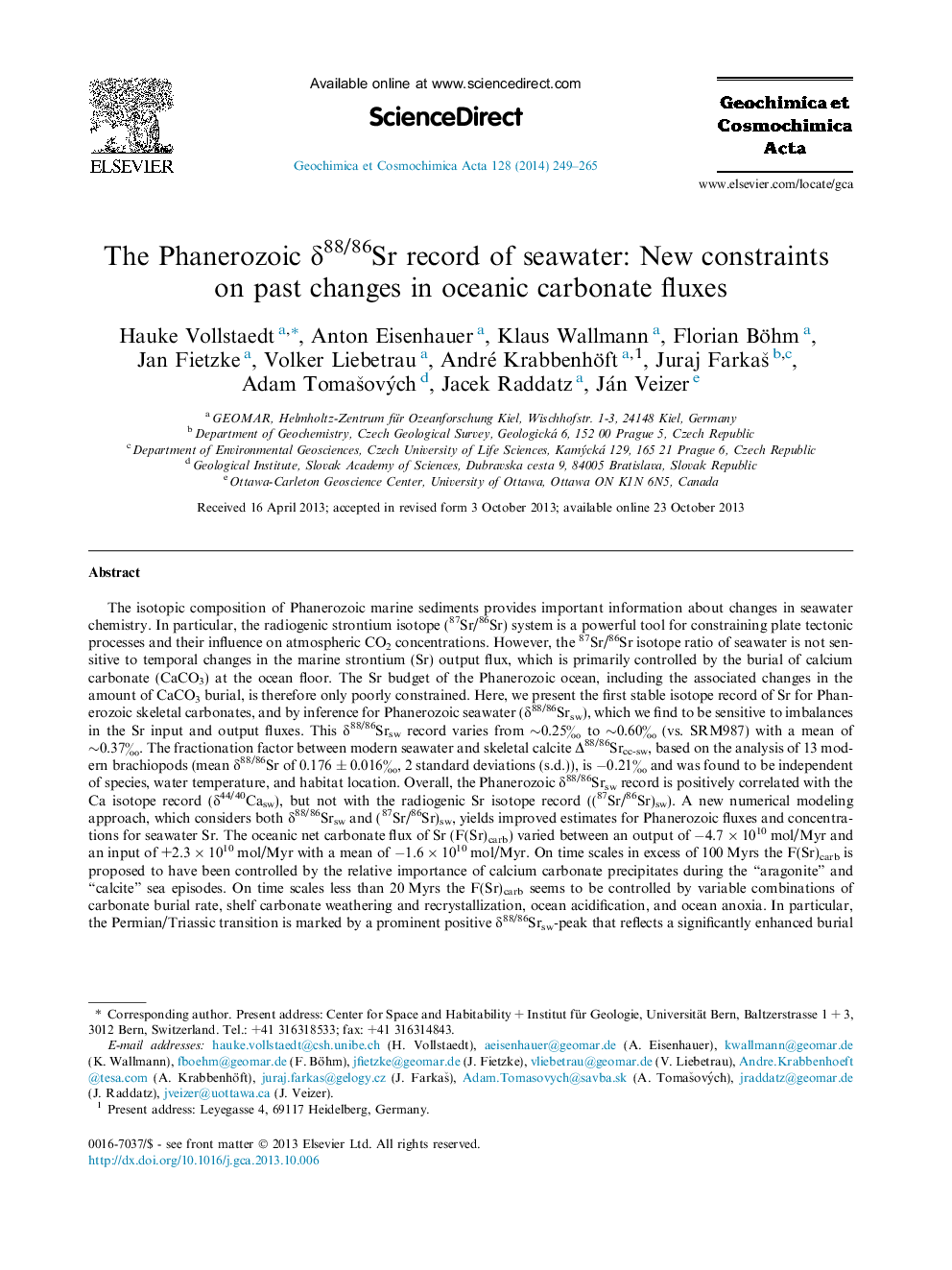| Article ID | Journal | Published Year | Pages | File Type |
|---|---|---|---|---|
| 6439069 | Geochimica et Cosmochimica Acta | 2014 | 17 Pages |
Abstract
The isotopic composition of Phanerozoic marine sediments provides important information about changes in seawater chemistry. In particular, the radiogenic strontium isotope (87Sr/86Sr) system is a powerful tool for constraining plate tectonic processes and their influence on atmospheric CO2 concentrations. However, the 87Sr/86Sr isotope ratio of seawater is not sensitive to temporal changes in the marine strontium (Sr) output flux, which is primarily controlled by the burial of calcium carbonate (CaCO3) at the ocean floor. The Sr budget of the Phanerozoic ocean, including the associated changes in the amount of CaCO3 burial, is therefore only poorly constrained. Here, we present the first stable isotope record of Sr for Phanerozoic skeletal carbonates, and by inference for Phanerozoic seawater (δ88/86Srsw), which we find to be sensitive to imbalances in the Sr input and output fluxes. This δ88/86Srsw record varies from â¼0.25â° to â¼0.60â° (vs. SRM987) with a mean of â¼0.37â°. The fractionation factor between modern seawater and skeletal calcite Î88/86Srcc-sw, based on the analysis of 13 modern brachiopods (mean δ88/86Sr of 0.176 ± 0.016â°, 2 standard deviations (s.d.)), is â0.21â° and was found to be independent of species, water temperature, and habitat location. Overall, the Phanerozoic δ88/86Srsw record is positively correlated with the Ca isotope record (δ44/40Casw), but not with the radiogenic Sr isotope record ((87Sr/86Sr)sw). A new numerical modeling approach, which considers both δ88/86Srsw and (87Sr/86Sr)sw, yields improved estimates for Phanerozoic fluxes and concentrations for seawater Sr. The oceanic net carbonate flux of Sr (F(Sr)carb) varied between an output of â4.7 Ã 1010 mol/Myr and an input of +2.3 Ã 1010 mol/Myr with a mean of â1.6 Ã 1010 mol/Myr. On time scales in excess of 100 Myrs the F(Sr)carb is proposed to have been controlled by the relative importance of calcium carbonate precipitates during the “aragonite” and “calcite” sea episodes. On time scales less than 20 Myrs the F(Sr)carb seems to be controlled by variable combinations of carbonate burial rate, shelf carbonate weathering and recrystallization, ocean acidification, and ocean anoxia. In particular, the Permian/Triassic transition is marked by a prominent positive δ88/86Srsw-peak that reflects a significantly enhanced burial flux of Sr and carbonate, likely driven by bacterial sulfate reduction (BSR) and the related alkalinity production in deeper anoxic waters. We also argue that the residence time of Sr in the Phanerozoic ocean ranged from â¼1 to â¼20 Myrs.
Related Topics
Physical Sciences and Engineering
Earth and Planetary Sciences
Geochemistry and Petrology
Authors
Hauke Vollstaedt, Anton Eisenhauer, Klaus Wallmann, Florian Böhm, Jan Fietzke, Volker Liebetrau, André Krabbenhöft, Juraj FarkaÅ¡, Adam TomaÅ¡ových, Jacek Raddatz, Ján Veizer,
